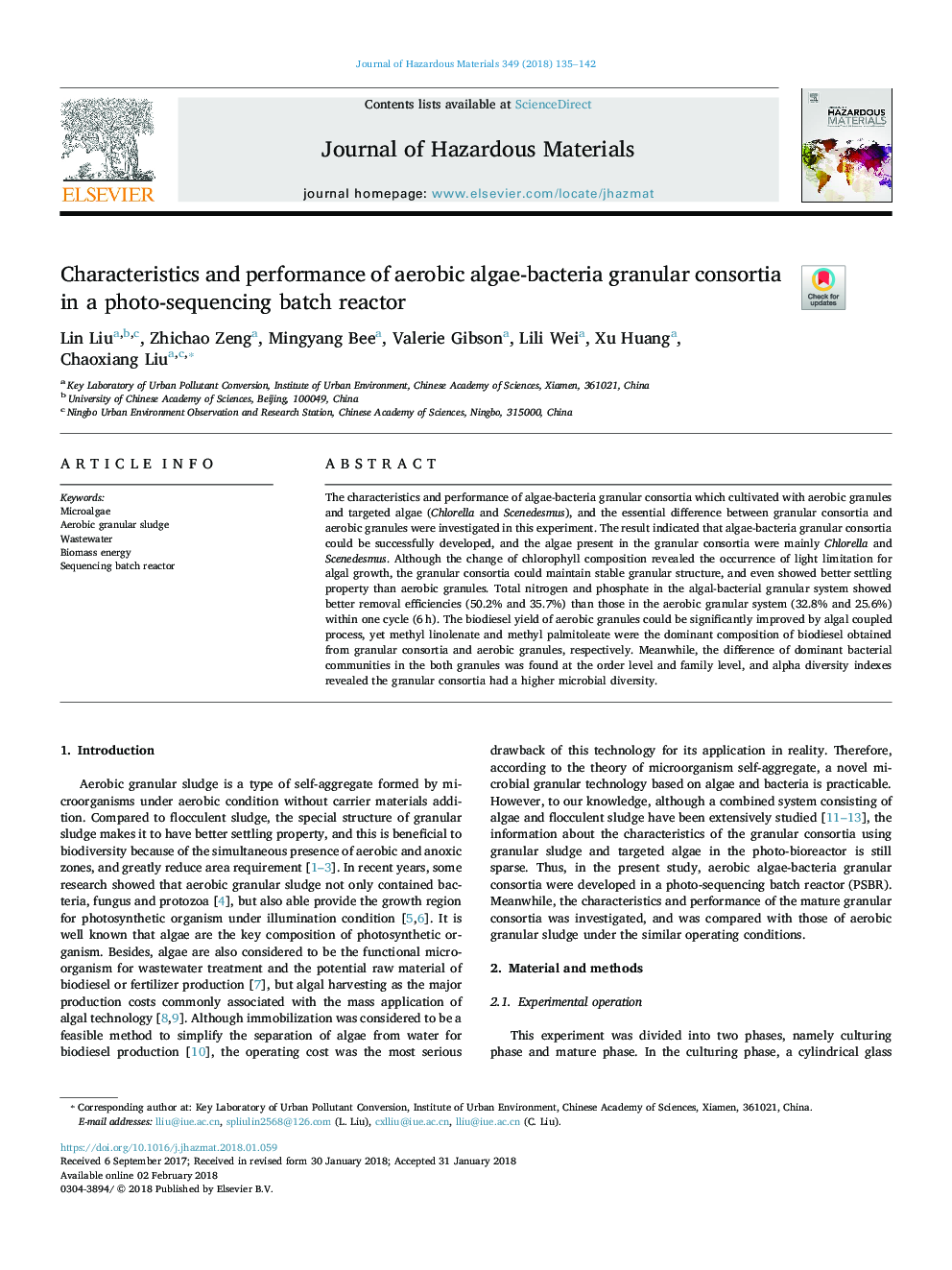| Article ID | Journal | Published Year | Pages | File Type |
|---|---|---|---|---|
| 6968851 | Journal of Hazardous Materials | 2018 | 8 Pages |
Abstract
The characteristics and performance of algae-bacteria granular consortia which cultivated with aerobic granules and targeted algae (Chlorella and Scenedesmus), and the essential difference between granular consortia and aerobic granules were investigated in this experiment. The result indicated that algae-bacteria granular consortia could be successfully developed, and the algae present in the granular consortia were mainly Chlorella and Scenedesmus. Although the change of chlorophyll composition revealed the occurrence of light limitation for algal growth, the granular consortia could maintain stable granular structure, and even showed better settling property than aerobic granules. Total nitrogen and phosphate in the algal-bacterial granular system showed better removal efficiencies (50.2% and 35.7%) than those in the aerobic granular system (32.8% and 25.6%) within one cycle (6â¯h). The biodiesel yield of aerobic granules could be significantly improved by algal coupled process, yet methyl linolenate and methyl palmitoleate were the dominant composition of biodiesel obtained from granular consortia and aerobic granules, respectively. Meanwhile, the difference of dominant bacterial communities in the both granules was found at the order level and family level, and alpha diversity indexes revealed the granular consortia had a higher microbial diversity.
Related Topics
Physical Sciences and Engineering
Chemical Engineering
Chemical Health and Safety
Authors
Lin Liu, Zhichao Zeng, Mingyang Bee, Valerie Gibson, Lili Wei, Xu Huang, Chaoxiang Liu,
